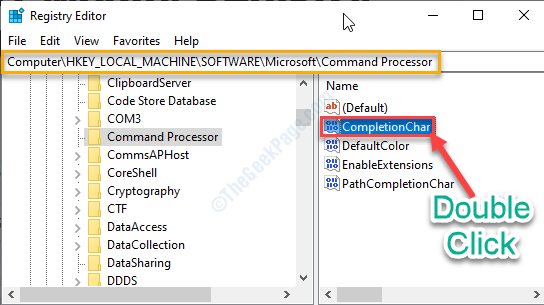

In addition to displaying all the available statistic information, you can also output only the certain details you need using these steps:
Dos commands windows 10 autofil how to#
How to search netstat details on Windows 10 If you want to see all the available parameters and additional help, you can always use the netstat /? command. The netstat -y command displays TCP connections templates for all connections. Usually, you'll never use this command unless you're using the server version of Windows or a high-performance application with a network adapter that supports this feature. NetworkDirect is a specification for Remote Direct Memory Access (RDMA), which is a process that allows fast data transfers using the network adapter, freeing up the processor to perform other tasks. The netstat -x is another supported command on Windows 10, and it produces a list of NetworkDirect connections, shared endpoints, and listeners. (This feature is only present on supported network adapters.) Show NetworkDirect connections The "InHost" value indicates that offloading isn't enabled, and the "Offload" means that the feature is transferring the workload to the network adapter. The offload state refers to the TCP Chimney Offload, which is a feature that transfers the network workload from the processor to the network adapter during data transmissions. The netstat -t command generates a list of the current connection offload state. The netstat -a command displays all active and inactive connections, and the TCP and UDP ports the device is currently listening. The tool also includes several parameters that you can use in Command Prompt to display different information about the network connections. How to use netstat parameters on Windows 10 Other status include, closed, fin_wait_1, fin_wait_2, last_ack, listen, syn_received, syn_send, and timed_wait. State: Indicates where the connection is active (established), the local port has been closed (time_wait), and the program hasn't closed the port (close_wait).Foreign Address: Lists the remote device's IP (or FQDN) address with the port number after semicolon port name (for example, https, http, microsoft-ds, wsd).The double-semicolon inside brackets indicates the local IPv6 address, and "0.0.0.0" refers to the local address too. Local Address: Shows the computer's IP address followed by a semicolon with a port number of the connection.Proto: Shows the connection protocol (TCP or UDP).

Once you execute the command, it'll return a list of all active connections in four columns, including: Quick note: When using the interval parameter, you can terminate the command using the Ctrl + C keyboard shortcut in the console. This example refreshes the command in question every five seconds: In the command, make sure to replace INTERVAL for the number (in seconds) you want to redisplay the information. (Optional) Type the following command to refresh the information at a specific interval and press Enter:

(Optional) Type the following command to display active connections showing numeric IP address and port number instead of trying to determine the names and press Enter: Type the following command to show all active TCP connections and press Enter: Search for Command Prompt, right-click the top result, and select the Run as administrator option.To get started with netstat, use these steps: How to search netstat details on Windows 10.How to use netstat parameters on Windows 10.


 0 kommentar(er)
0 kommentar(er)
